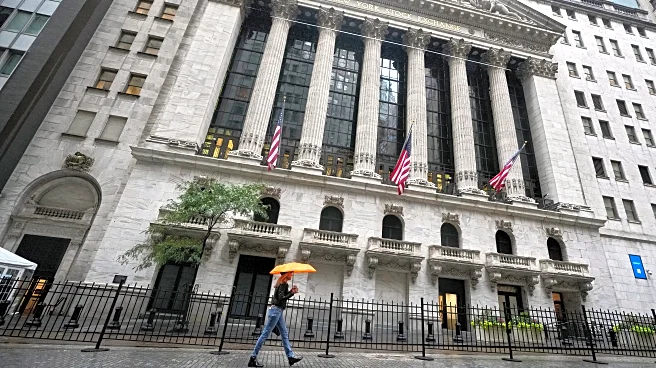What's Happening?
Recent reports have highlighted growing concerns among investors due to signs of loan troubles in banks. The S&P 500 index experienced fluctuations, ending the week with a 1.7 percent rise despite initial
investor anxiety. This unease was triggered by disclosures from regional banks such as Zions Bancorp and Western Alliance Bank. Zions Bancorp reported a $50 million charge-off related to loans for distressed commercial mortgages, while Western Alliance Bank revealed potential fraud involving commercial real estate loans, leading to legal action against the borrowers. These developments follow the collapse of subprime auto lender Tricolor and auto parts supplier First Brands Group, with major banks like JPMorgan Chase, Fifth Third Bancorp, and Jefferies reporting losses from loans to these companies.
Why It's Important?
The financial health of banks is crucial for economic stability, and signs of loan troubles can have significant implications for the broader economy. The recent disclosures have raised concerns about the potential for a wider financial impact, particularly in the commercial real estate sector. Investors are closely monitoring these developments, as they could signal underlying weaknesses in the banking sector that might affect credit availability and economic growth. The situation also underscores the interconnectedness of financial institutions and the potential ripple effects of loan defaults on the economy.
What's Next?
As banks continue to assess and disclose their financial positions, investors and regulators will be watching for further signs of distress. The legal actions taken by Western Alliance Bank could set precedents for how similar cases are handled in the future. Additionally, the ongoing trade tensions between the U.S. and China may further complicate the economic landscape, potentially influencing bank lending practices and investor confidence. Stakeholders will need to navigate these challenges carefully to mitigate potential risks to the financial system.













